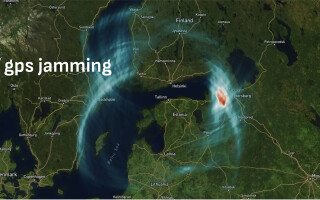Digital image processing
StoryNovember 28, 2014
High-definition (HD) digital electro-optic and infrared sensors are shoveling evermore data into the battle space. How can soldiers get that information quickly enough to act on it in a timely manner?
High-definition (HD) digital electro-optic and infrared sensors are shoveling ever-more data into the battle space. How can soldiers get that information quickly enough to act on it in a timely manner? Intel data traditionally has been the preserve of the higher echelons, while trickle-down information has been the lot of the fighters in the field.
Part of the answer is the extension of high-resolution sensors from satellites and large manned aircraft to smaller unmanned platforms – and portable or handheld devices – that can link information to forces on the ground, even to small units looking over the next hill. These sensors and accompanying processors have been scaled down in size so that they can be mounted together in small gimbals, yet they provide more detailed imagery at longer ranges than was possible before.
Even very geo-specific data could confuse rather than clarify a local situation for soldiers in the stress of combat, when there is precious little time to interpret ambiguous imagery. The need for local information but also for clarity in its presentation has driven advances in real-time image processing, so that fighters can obtain the situational awareness they need to protect themselves and to act decisively against threats within tactical timelines.
Image processing gets sophisticated
Although the most modern sensors feature some processing at the point of collection, most images don’t come out of the front end of the camera fit to be seen, much less understood. Images may be distorted and vertigo-inducing as a result of the motion of the sensor, as the gimbal swivels, and as the platform moves due to engine vibration, flight maneuvers, and turbulence. The targets may float out of the images if areas of interest are not consistently and accurately tracked.
High-resolution digital sensors are being phased into the inventory; while many analog interface sensors are still being deployed and shipped, they are increasingly being replaced with digital imagers. Digital signals don’t have to be converted and can be more easily processed to enhance image quality. The higher the resolution, for example, the more the user can zoom in on particular details. Sophisticated processing is still necessary to collect, stabilize, track, and compress this digital video imagery so that it can be transmitted to users without overwhelming data links.
Traditionally, real-time video trackers performed two essential tasks: stabilization and tracking. Stabilization removes unwanted movement and vibration in the image produced by the platform and the sensor. Tracking, on the other hand, keeps the target within the center of the sensor’s field of view. Tracking algorithms send steering commands to the gimbal, based on target information derived from the sensor data.
The latest generation of automatic video trackers can also eliminate full rotational movement, allowing the image to be controlled in azimuth, elevation, and rotation axes. This advanced stabilization technology makes it easier and faster for users to see what’s going on in an image or video. Some processing cards include built-in data compression as well, to minimize transmission bandwidth and give the user the ability to overlay images with other information such as GPS latitude/longitude, map coordinates, and time stamps.
These newer products also minimize latency by providing parallel-processing paths for handling multiple high-resolution targets simultaneously. They combine the latest ruggedized off-the-shelf processing technology together with field programmable gate arrays (FPGAs) for efficient data handling and processing.
One example of the new-generation, high-definition video tracker cards is GE’s ADEPT4000, which provides tracking, stabilization, and compression of images up to 1080p30 resolution and frame rate, in a single one-ounce, sub-credit-card-sized, 5 W package with onboard Ethernet connectivity to enable the connected battlefield (see Figure 1).
Figure 1: The ADEPT4000 from GE enables the connected battlefield with one high-def video tracker card.
(Click graphic to zoom by 1.9x)
In addition, the latest technology includes advanced, dynamic power-saving techniques, such as “sleep” modes, which prolong battery life, so that processing takes place only when the sensor is focusing on an area of interest. Size, weight, and power (SWaP) optimization is designed in from the start.
As today’s forces engage in asymmetrical conflicts that demand real-time intelligence data at the tactical edge, the need grows for small, rugged, power-efficient computational packages with built-in connectivity at a reasonable cost. Image-processing technology is keeping pace with these tough demands by leveraging off-the-shelf hardware with innovative software and packaging.
defense.ge-ip.com







